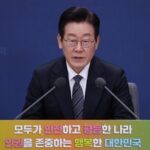|
On the 17th, as The New York Times (NYT) reported, Tesla drivers in the United States faced a formidable adversary known as the cold weather. In certain regions, such as Chicago, where the wind chill temperature plummeted to below -30 degrees Celsius (-22 degrees Fahrenheit) due to the polar vortex, numerous incidents occurred involving Tesla vehicles needing to be towed due to battery discharge.
According to the U.S. National Weather Service (NWS), the day before, the wind chill temperature in and around Chicago had reached a bone-chilling -34 degrees Celsius (-29.2 degrees Fahrenheit). This extreme cold led to electric car charging stations turning into scenes of frustration as drivers contended with battery discharge issues, resulting in long lines extending onto the streets.
Electric vehicle owners found themselves grappling with sudden battery depletion, extended charging times, and the anxiety of not knowing when the power supply at the charging station would be interrupted. One Tesla driver resorted to opening the frozen car door and making their way to a Tesla Supercharger station, only to discover that all 12 charging points were already in use, necessitating a several-hour wait.
An Uber driver, operating a different brand of electric car, embarked on a journey to a charging station when the remaining driving distance indicated 48 kilometers (30 miles). However, the vehicle’s battery discharged within minutes, forcing a tow. The driver recounted that what typically takes an hour for charging stretched into a grueling 5-hour ordeal, commenting, “In this extreme cold, cars, chargers, and people just don’t function properly.”
Tesla advises its users to maintain their battery power at 20% or higher and to utilize the departure reservation function in such situations. Nevertheless, some drivers have reservations about driving a Tesla after enduring these winter challenges.
Experts shed light on the technical issues involved, explaining that the chemical reaction between the battery’s positive and negative poles slows down at low temperatures, making rapid charging a challenging proposition. Professor Jack Brouwer from the University of California, Irvine, remarked, “In cold weather, charging the battery quickly becomes difficult, and there’s no immediate solution to this problem.”
NYT also underscored the lack of charging infrastructure in the United States, comparing it unfavorably to Northern European countries like Norway. In Norway, where one of every four vehicles is electric, the long wait times during winter have been addressed by expanding the nationwide charger network. According to Norwegian experts, about 90% of electric car owners in Norway have private charging facilities, and European companies have been actively developing technologies that enable batteries to function efficiently in cold weather.
















Most Commented